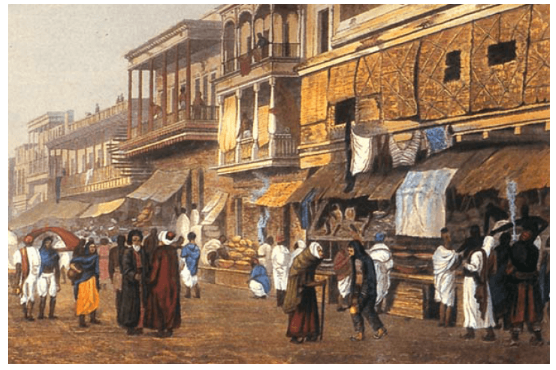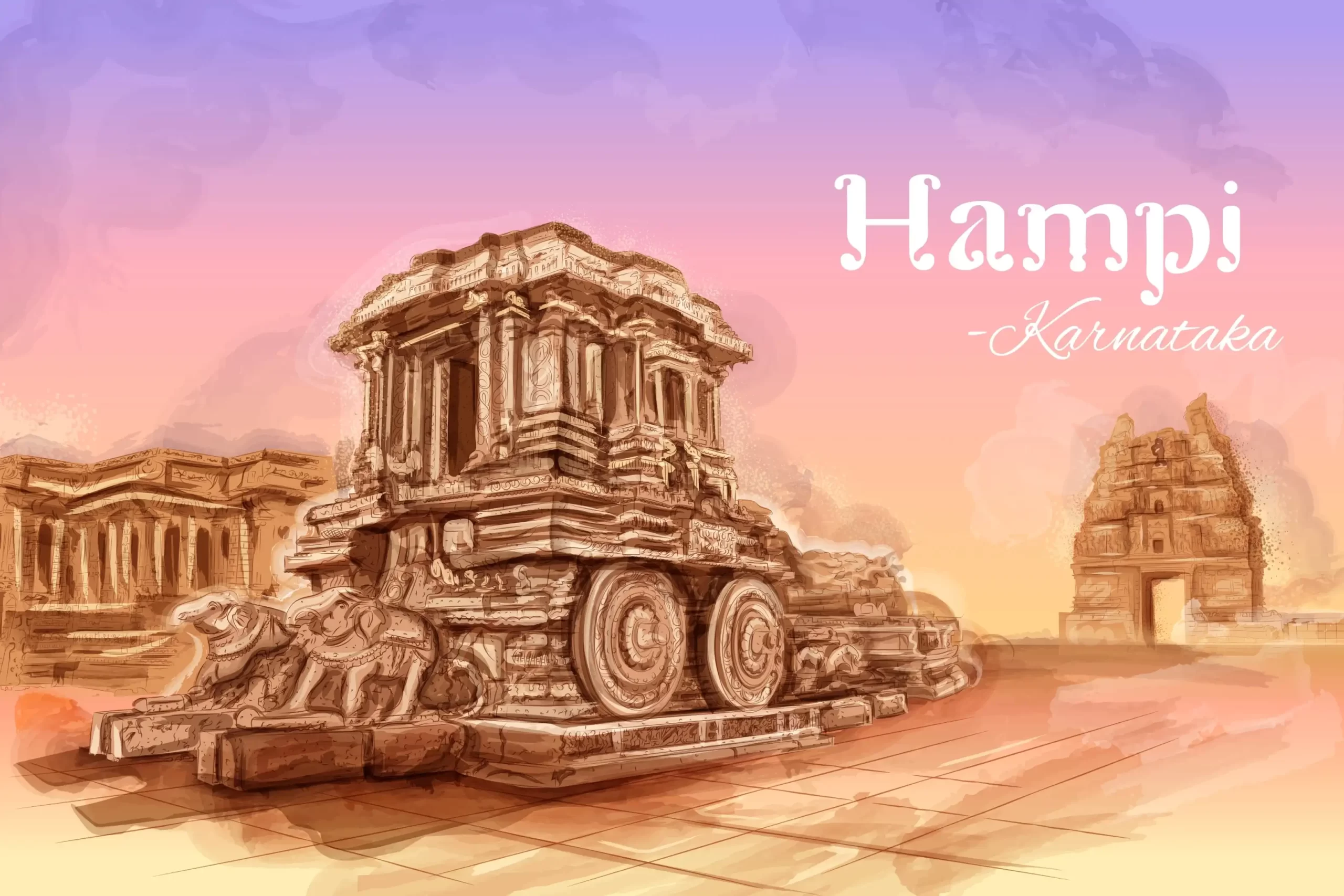Introduction
Numerous new cities emerged in mediaeval India. There were several sorts of settlements, and each one was created with a certain objective in mind. Towns of this kind included administrative, commercial, and craft sorts. Towns were the sign of any kingdom’s growth and wealth. Every town’s market was a significant feature. In such locations, the market’s growth was clearly visible. Each of the two had its own administration, with Kotwals and Faujdars being its two most important components. The town’s craftsmanship and architecture was another appealing aspect. In the mediaeval era, art and craftsmanship were at their pinnacle. The biggest achievements in architecture and craftsmanship are attributed to empires like the Delhi Sultanate, the Mughals, and the Vijaynagar Empire.
The most rich people at this period were the craftspeople. In the latter half of the 16th century, cities like Ahamadabad and Murshidabad grew to become some of the largest commercial centers, while many wealthy cities saw a slow decline. Hampi, Surat, and Masulipatnam were the three most significant cities.

Mediaeval Indian city
Hampi
The fortified city of the Vijayanagara empire was Hampi. In the year 1336, it was founded in the Krishna-Tungabhadra basin. Hampi served as the capital of the Vijayanagara empire. It was a commercial town. With some of the most recognisable buildings and structures ever built, Hampi was an architectural marvel. In addition to praising Hampi’s magnificent architecture, the Portuguese explorer Domingo Paes also mentioned the city’s grand foyer and strong fortification.

Unlike any other city, the walls of the city were not built up with the help of any cementing materials or Mortars, but they were built by interlocking stone slabs together. Hampi was a city of distinctive architecture. The buildings had majestic arches, domes and pillared halls with decorated walls.
Hampi was bustling with commercial and cultural activity in the 15th and 16th centuries. The city attracted a large number of traders, notably Moors (Muslim merchants), Chettis, and European traders. The most significant temple had a sizable prayer hall, and it was dedicated to Shiva. In the city, Devdasi tradition predominated. Devdasi gave daily performances for the god, the king, and the people. The most significant celebration at that time was Mahanavmi, now known as Navaratri.
There was a Mahanavami platform, which was the place for the king. The king received his guests and accepted homages from his chieftains and used to watch the dance, Music performances and wrestling from that platform.The city flourished for 200 years and was a sign of prosperity of the Vijayanagara empire. With the Mughal and decani sultan’s invasion, the empire fell in 1556 and the city was destroyed by the invaders and the magnificent city of Hampi became a ruin.
Surat: A gateway to the West
Surat served as the industrial and commercial centre of the western markets. During the Mughal era, it was quite prevalent. Because all trade to west Asia originated there, it was known as the gateway to the west. Moreover, it was a port city where all trade was conducted over the Gulf of Ormuz. It was also known as The gateway to Mecca because the ship sailed from here for Mecca. In 1689, according to a British traveller, Ovington described that approx hundreds of ships from all over the world could be found in the ports of Surat at any time.
Europeans, including the British, Dutch, French and Portuguese formed their factories and warehouses at surat. Zari, the textile product of Surat, was very famous. The Kathiwadi seths and mahajans had a huge banking system in the city and the Surat Hundi was honoured in far-off markets in Egypt, Iraq and Belgium At the end of the 17th century, the downfall of surat started, with the falling of the Mughal empire, the control of sea trade by the Portuguese and the transfer of the factories to Bombay.
Masulipatnam
In the seventeenth century, the Krishna River Delta was home to the trade town of Masulipatnam. The town became the hub of bustling commerce.
Masulipatnam was once a tiny fishing village, but the simplicity of docking ships in its port made it helpful to all traders and offered the merchants a place to live, according to William Methwold, an officer-in-charge of the East India Company. Masulipatnama was under Dutch and British administration, and the Dutch erected a fort there.
The Golconda kings were interested in the trading of spices and textiles rather than European merchants. The town prospered as a result of the rivalry for trade monopoly between the Golconda monarchs, Persian traders, Chettis, Telugu Komaties, and European traders.
However, the subsequent participation of the Mughals and the rivalry between the British and the Dutch made it difficult for Europeans to engage in open trade. East India Company began looking for alternate locations where they might get political and administrative support as a consequence of this problem. The little town of Masulipatnam once again reverted to its pre-British state when the British made Bombay, Calcutta, and Madras their commercial hubs.
Summary
Towns served as the centre of commerce and trade in mediaeval India. Kings built a number of walled cities throughout the time. Towns were given special importance since they were a significant source of revenue for the monarchy. There were several distinct town kinds, including administrative, commercial, manufacturing, and port towns. Any kingdom’s port towns were essential because they served as the centre for all international and significant domestic trade. Surat and Masulipatnam were two well-known port cities.
Frequently Asked Questions
Q1. Where is Masulipatnam located?
Ans:Masulipatnam is a town located on the delta of the Krishna River. The town is known for its fishing industry. During the 17th century, the city was well-known for its strong trade ties. Both the Dutch and English East India Companies tried to control Masulipatnam, but the Dutch ultimately built a fort there.
Q2. What was Surat known as in the past?
Ans: Surat, previously known as Suryapur, is a city in the Gujarat state of India. Gopi, a Brahman who constructed the Gopi Tank (a water reservoir) in 1516 and gave the region the name Suryapur. In 1520, the city’s name was changed to Surat. In the 12th and 15th centuries, Muslims pillaged it.
Q.3 What were the most important features of Hampi?
Ans: Humpy was the most important town of the Vijayanagara empire, it was a fortified town. Its main feature was its architecture, trade as well as its culture.
 Mission Statement
Mission Statement
“Empower every student to achieve full potential”
88Guru has been established with the social objective of making quality video-based learning material available to all Indian students. Technology, Connectivity and Social Media are rapidly changing the world of Education and we wish to lead the transformation of the tuition industry in India.
88Guru is the perfect complement to the current tuition model. 88Guru creates a wonderful opportunity for children and parents to bond while engaging in a valuable learning activity. It also provides the complete curriculum at your fingertips for those moments when you need some help at short notice. We believe that this mode of tuition could be transformational, adding hours to a child's day while providing complete control over the learning process.
Every course is taught by the best teachers from India's top schools and conducted in an engaging manner to keep students involved. The e-learning process consists of video-based instructions, computer-graded assignments, and a dashboard which allows the student and parent to track progress.


